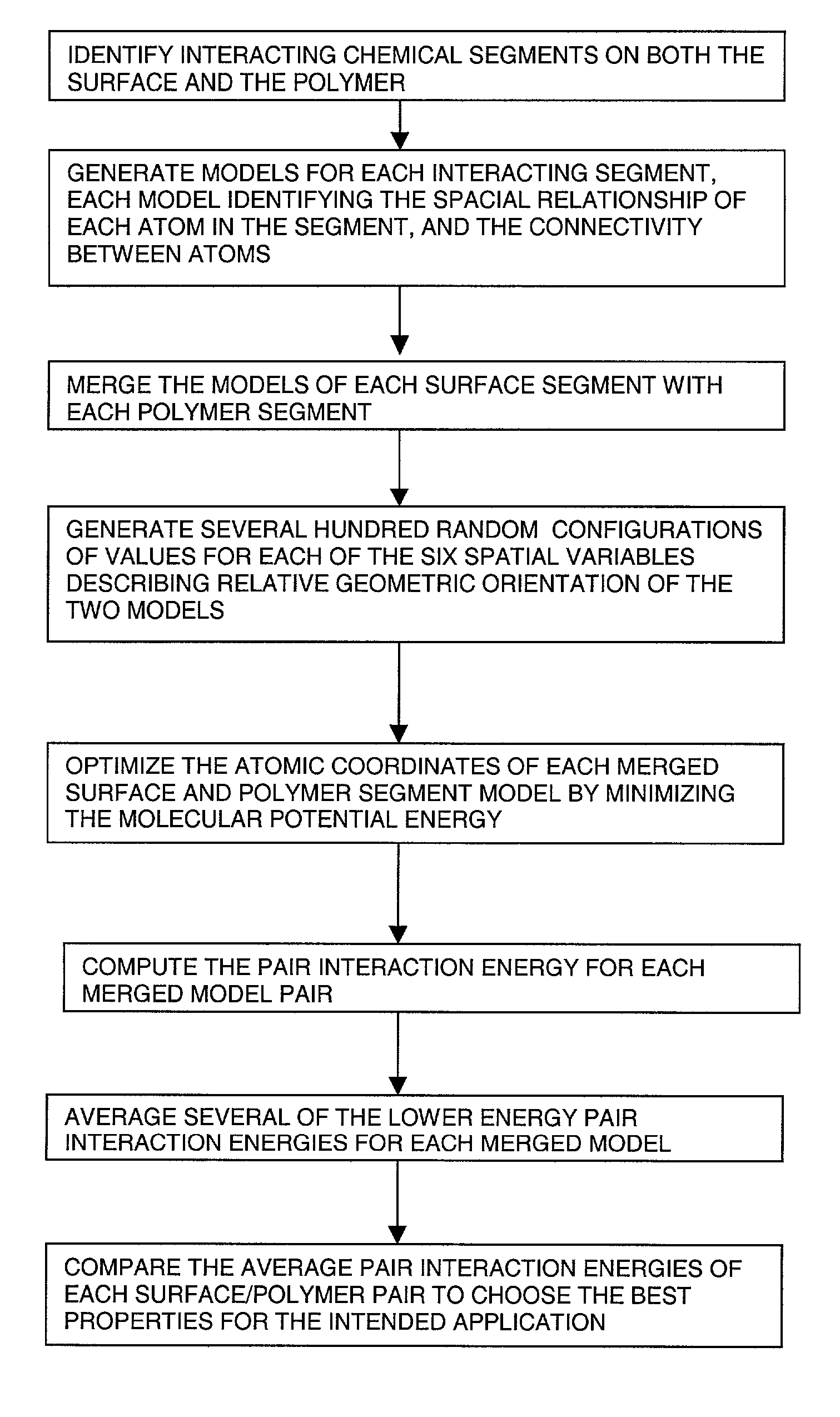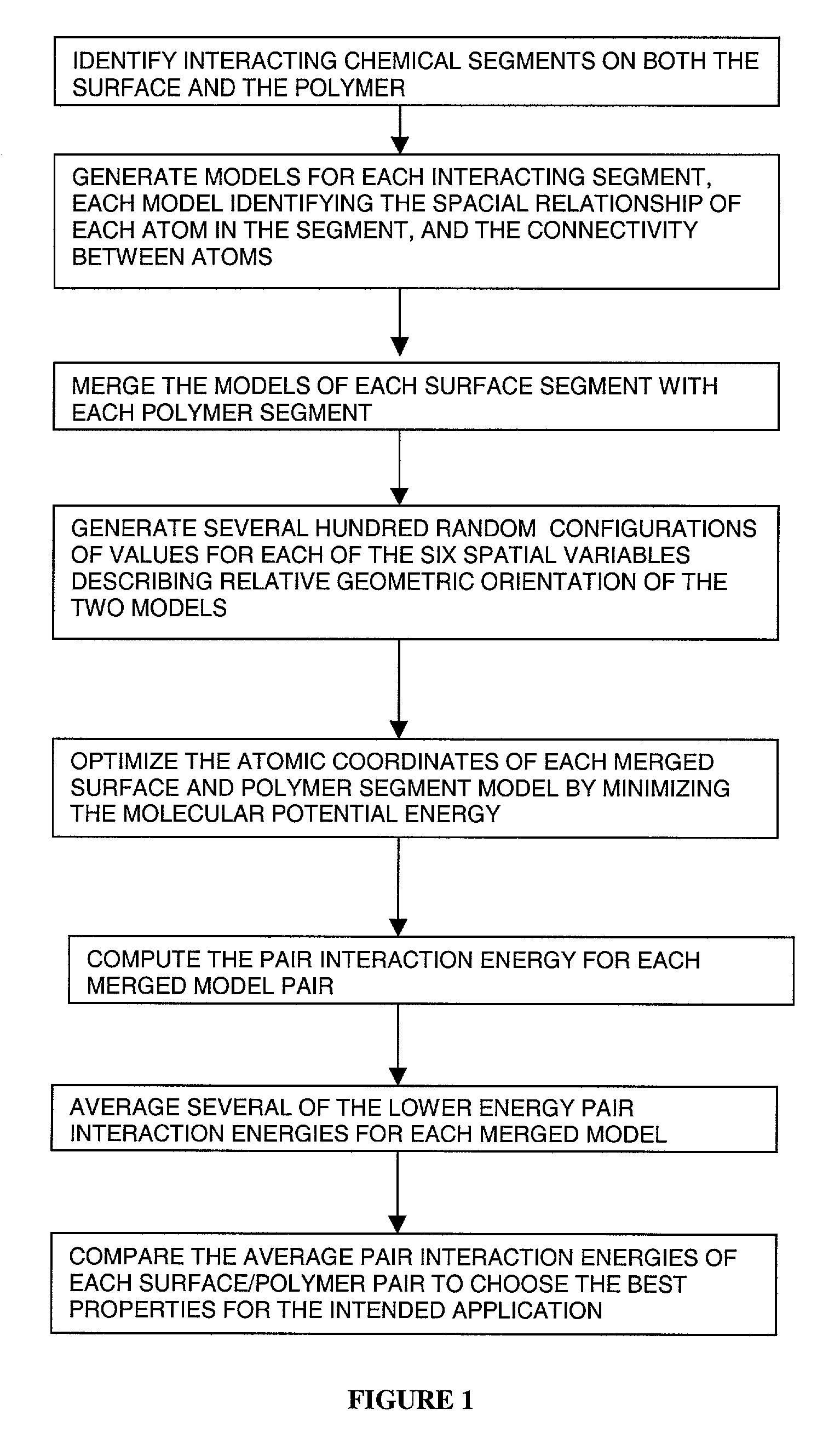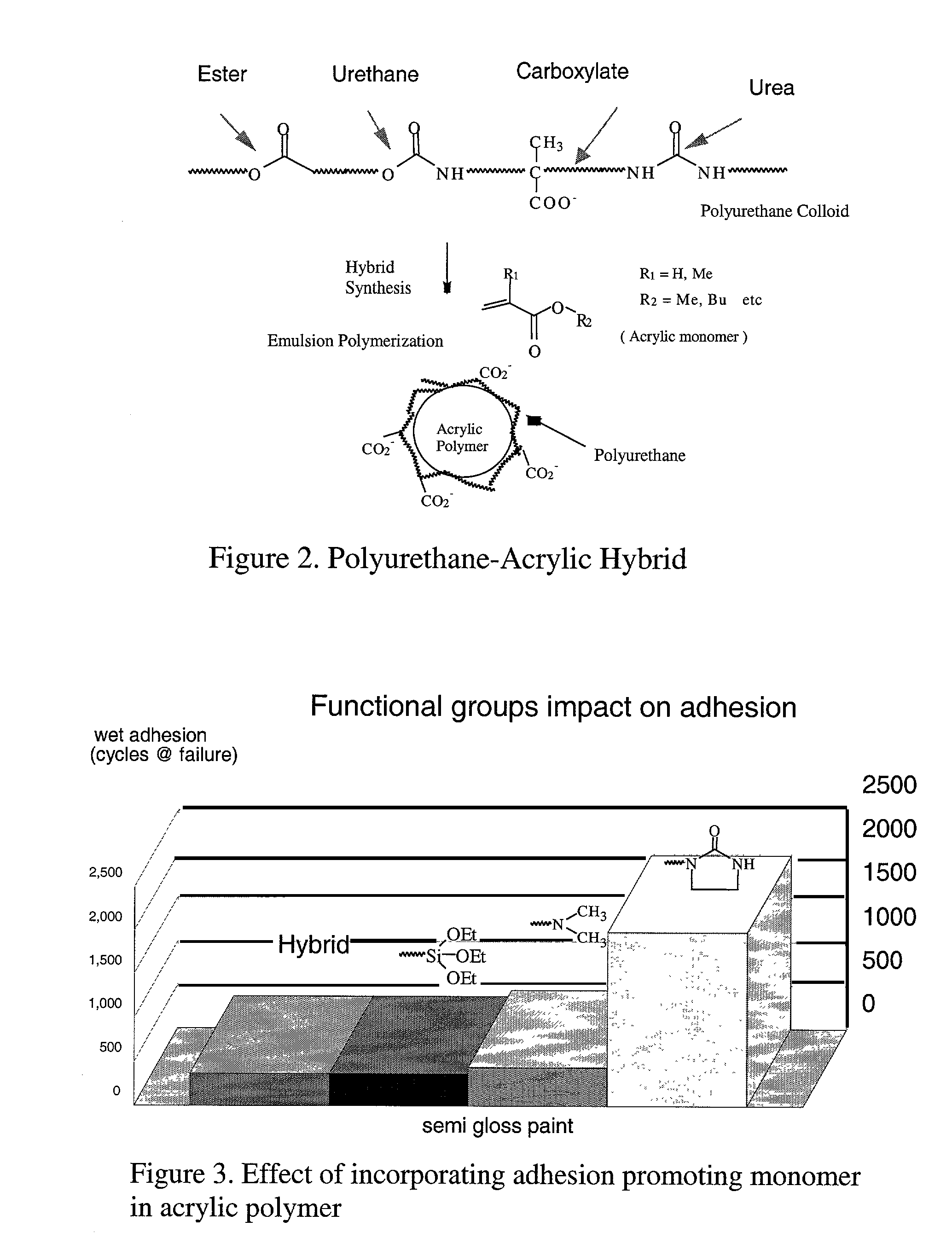Method for predicting adhesive interactions using molecular modeling
a molecular modeling and adhesive technology, applied in chemical property prediction, instruments, analogue processes for specific applications, etc., can solve the problems of water-based paints losing adhesion in wet or humid environments, and molecular polarity alone cannot explain the improvement of wet adhesion imparted
- Summary
- Abstract
- Description
- Claims
- Application Information
AI Technical Summary
Problems solved by technology
Method used
Image
Examples
example 1
[0058]The molecular model described above was applied to the interaction between an alkyd-coated substrate and a polyurethane. The ideal structure of the polyurethane dispersion is shown in FIG. 1. Here, the possible chain segments include ester, carboxylic acid, urea and urethane. Functionalized polyurethane also contains ureido functional monomer. These chain segments are referred to as PU-E, PU-A, PU-U1, PU-U2 and PU-U3, respectively. The structures of these models are shown in FIG. 7.
[0059]These acrylate results were compared to results for various polyurethane segments. Average alkyd-polyurethane segment interaction energies were obtained as described above. The computed average interaction energies for acid (PU-A), ester (PU-E), urethane (PU-U1) and urea (PU-U2) are 11.5, 7.1, 13.2 and 11.9 kcal / mole, respectively. Generally these results are higher than values obtained for the acrylates, indicating that the polyurethane has a greater affinity for an alkyd su...
example 2
Alkyd-Adhesion Promoting Monomers
[0062]The molecular modeling method of the invention was applied to an alkyd surface and adhesion-promoting monomers of a polymer, in the manner described above. The acrylic latexes studied here are composed of mainly butyl acrylate and methyl methacrylate. Small amounts of functional monomer can also be included in the composition. These monomers include amine, silane and ureido functionalities. Here, the model segments are referred to as BA, MMA, NMe2, SiO and U, respectively. The structures of these models are shown in FIG. 9.
[0063]Molecular interactions between alkyd and the functional monomers were examined. The computed molecular interaction energies for silane (SiO), amine (NMe2), and ureido (U) are 12.6, 13.7, and 16.3 kcal / mole, respectively. These functional groups have stronger molecular interactions compared to the typical acrylic latex polymer, with the ureido group showing the strongest alkyd molecular affinity. FIG. 10 shows the struct...
PUM
| Property | Measurement | Unit |
|---|---|---|
| dipole moments | aaaaa | aaaaa |
| dipole moments | aaaaa | aaaaa |
| dipole moments | aaaaa | aaaaa |
Abstract
Description
Claims
Application Information
 Login to View More
Login to View More - R&D
- Intellectual Property
- Life Sciences
- Materials
- Tech Scout
- Unparalleled Data Quality
- Higher Quality Content
- 60% Fewer Hallucinations
Browse by: Latest US Patents, China's latest patents, Technical Efficacy Thesaurus, Application Domain, Technology Topic, Popular Technical Reports.
© 2025 PatSnap. All rights reserved.Legal|Privacy policy|Modern Slavery Act Transparency Statement|Sitemap|About US| Contact US: help@patsnap.com



